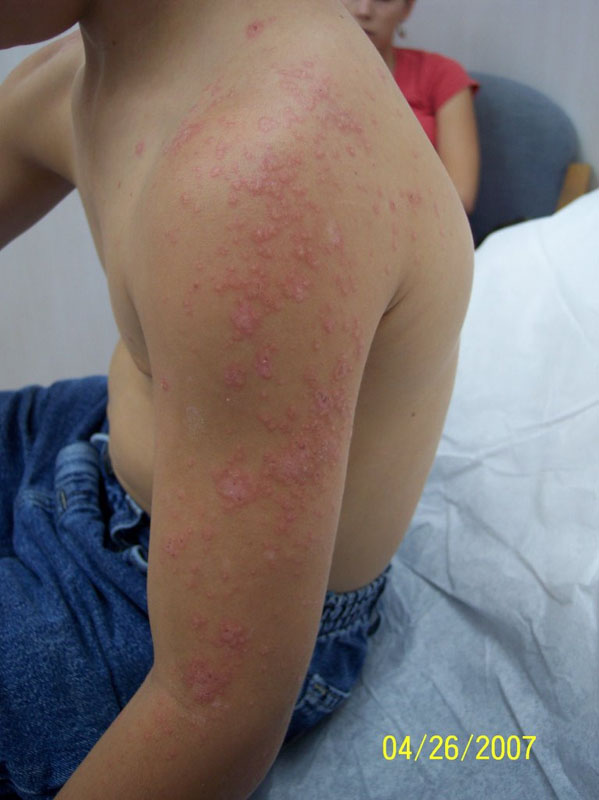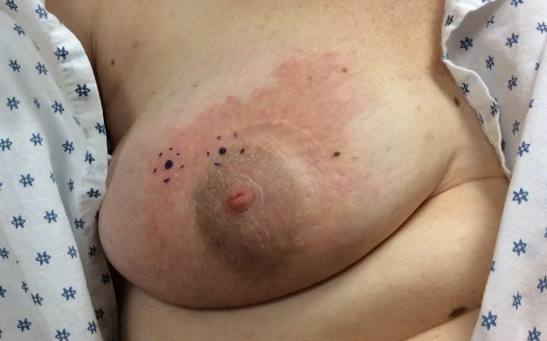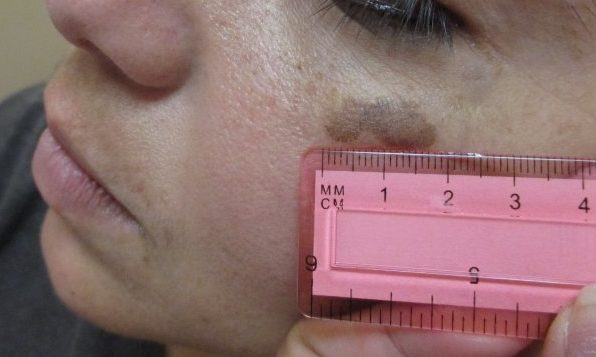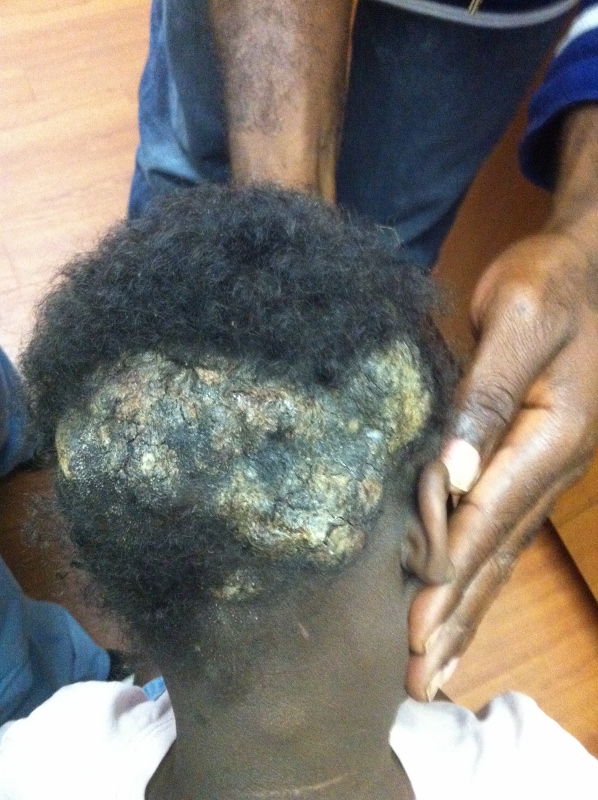CORRECT DIAGNOSIS:
HSV induced photo erythema multiforme
DISCUSSION:
This case proved challenging at first with limited history and vague initial clinical and histopathological findings. Originally the child was histologically diagnosed with juvenile spring eruption. Not convinced of this diagnosis we had the child return with his mother and her additional history proved invaluable. The history of recurrent herpes labialis helped us along with the maturation of the first rash into discrete targetoid lesions. All of these factors along with a negative EBV in-situ hybridization led us to the diagnosis and prompt institution of acyclovir.
HSV induced erythema multiforme is not a rare entity and its occurrence has been well documented and researched(1). Its exact cause remains a mystery but new data has pointed to a specific immunological phenomenon(2). EM like lesions often occur with the presence of viral material in the skin(3). Photo-drug induced EM, an entirely different pathological process, has been reported in the literature, but no true HSV induced photo-EM has been reported.
This case was so unique that the rash occurred only in photo distributed areas on the child. This should be considered part of any differential where there is photo-distributed dermatitis.
TREATMENT:
The patient was started on acyclovir at 20mg/kg dose 4 times daily with rapid clearance. Strict and complete sun blockade was also encouraged. When the drug was stopped, the rash quickly returned with sun exposure.
REFERENCES:
Kokuba, H., Aurelian, L., & Burnett, J. (1999). Herpes simplex virus-associated erythema multiforme (HAEM) is mechanistically distinct from drug-induced erythema multiforme: Interferon-gamma is expressed in HAEM lesions and tumor necrosis factor-alpha in drug-induced erythema multiforme lesions. Journal of Investigative Dermatology, 113(5), 808-815. PMID: 10523631
Kokuba, H., Imafuku, S., Huang, S., Aurelian, L., & Burnett, J. W. (1998). Erythema multiforme lesions are associated with expression of a herpes simplex virus (HSV) gene and qualitative alterations in the HSV-specific T-cell response. British Journal of Dermatology, 138(6), 952-964. PMID: 9793156
Brice, S. L., Leahy, M. A., Ong, L., Krecji, S., Stockert, S. S., Huff, J. C., & Weston, W. L. (1994). Examination of non-involved skin, previously involved skin, and peripheral blood for herpes simplex virus DNA in patients with recurrent herpes-associated erythema multiforme. Journal of Cutaneous Pathology, 21(5), 408-412. PMID: 7839686




